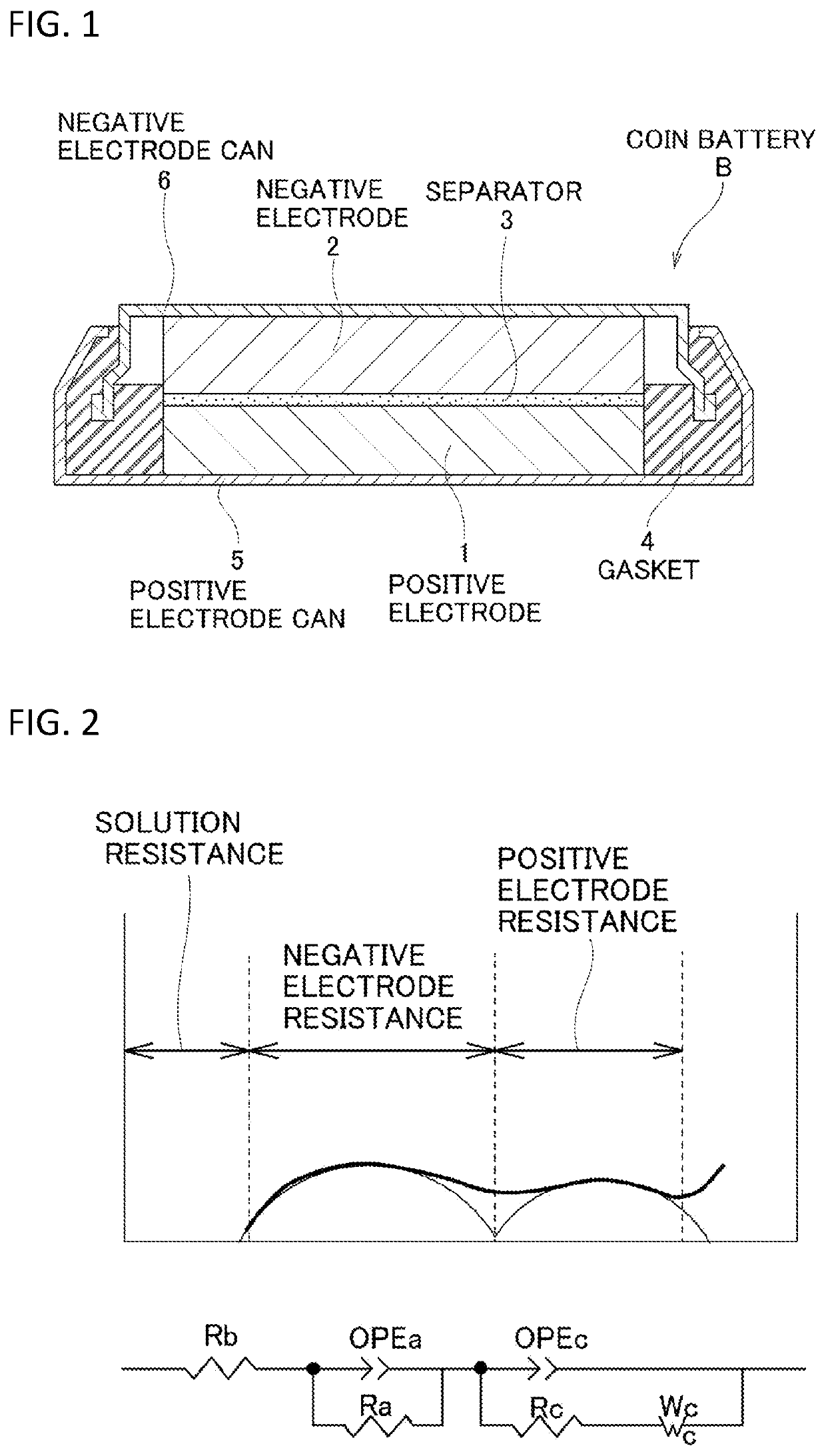Positive electrode active material for nonaqueous electrolyte secondary batteries, method for producing same, and nonaqueous electrolyte secondary battery
a technology of nonaqueous electrolyte and active materials, which is applied in the direction of positive electrodes, cell components, and nickel compounds, can solve the problems of large fluctuations in the price of cobalt, poor charge and discharge cycle, and low capacity, and achieve excellent battery characteristics, excellent thermal stability, and high capacity
- Summary
- Abstract
- Description
- Claims
- Application Information
AI Technical Summary
Benefits of technology
Problems solved by technology
Method used
Image
Examples
example 1
[0144]The positive electrode active material that includes lithium nickel composite oxide was produced by a series of steps including: a step of preparing a nickel composite compound having a specified composition described below; a step of preparing a fired powder having a specified composition; and a step of drying the fired powder obtained after washing with water; and furthermore, a coin battery using this as a positive electrode material was produced and evaluated by impedance.
[0145]Note that each raw material was weighed so that the molar ratios of the metal components constituting the lithium nickel composite oxide were Ni:Co:Al:Li=0.82:0.15:0.03:1.02.
(1) Step for Preparing a Nickel Composite Compound
[0146]First, an aqueous solution was prepared by mixing nickel sulfate hexahydrate, cobalt sulfate heptahydrate, and aluminum sulfate so as to have a desired ratio. This aqueous solution was dripped simultaneously with aqueous ammonia and caustic soda aqueous solution into a stir...
example 2
[0158]Except for using a nickeloxy composite hydroxide obtained by further adding sodium hypochlorite to a nickel composite hydroxide and subjecting it to an oxidation process as a nickel composite compound instead of the nickel composite hydroxide in Example 1, a lithium nickel composite oxide was produced by the same steps as in Example 1. Note that it was confirmed by powder X-ray diffraction using Cu-Kα rays that the obtained lithium nickel composite oxide had a single phase of lithium nickel composite oxide.
example 3
[0159]Except for using nickel composite oxide obtained by oxidation roasting of nickel composite hydroxide at 740° C. as a nickel composite compound instead of the nickel composite hydroxide in Example 1, a lithium nickel composite oxide was produced by the same steps as in Example 1. Note that it was confirmed by powder X-ray diffraction using Cu-Kα rays that the obtained lithium nickel composite oxide had a single phase of lithium nickel composite oxide.
PUM
| Property | Measurement | Unit |
|---|---|---|
| specific surface area | aaaaa | aaaaa |
| temperature | aaaaa | aaaaa |
| electric conductivity | aaaaa | aaaaa |
Abstract
Description
Claims
Application Information
 Login to View More
Login to View More - R&D
- Intellectual Property
- Life Sciences
- Materials
- Tech Scout
- Unparalleled Data Quality
- Higher Quality Content
- 60% Fewer Hallucinations
Browse by: Latest US Patents, China's latest patents, Technical Efficacy Thesaurus, Application Domain, Technology Topic, Popular Technical Reports.
© 2025 PatSnap. All rights reserved.Legal|Privacy policy|Modern Slavery Act Transparency Statement|Sitemap|About US| Contact US: help@patsnap.com

